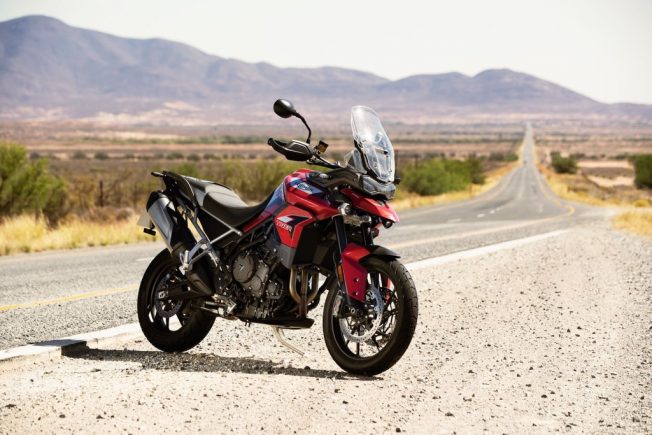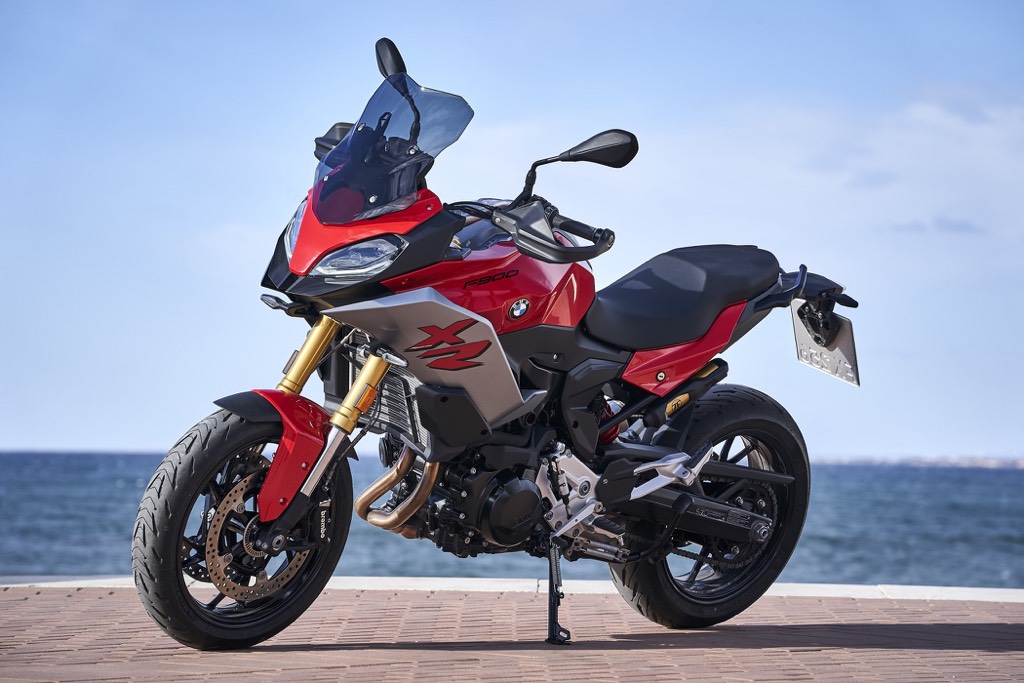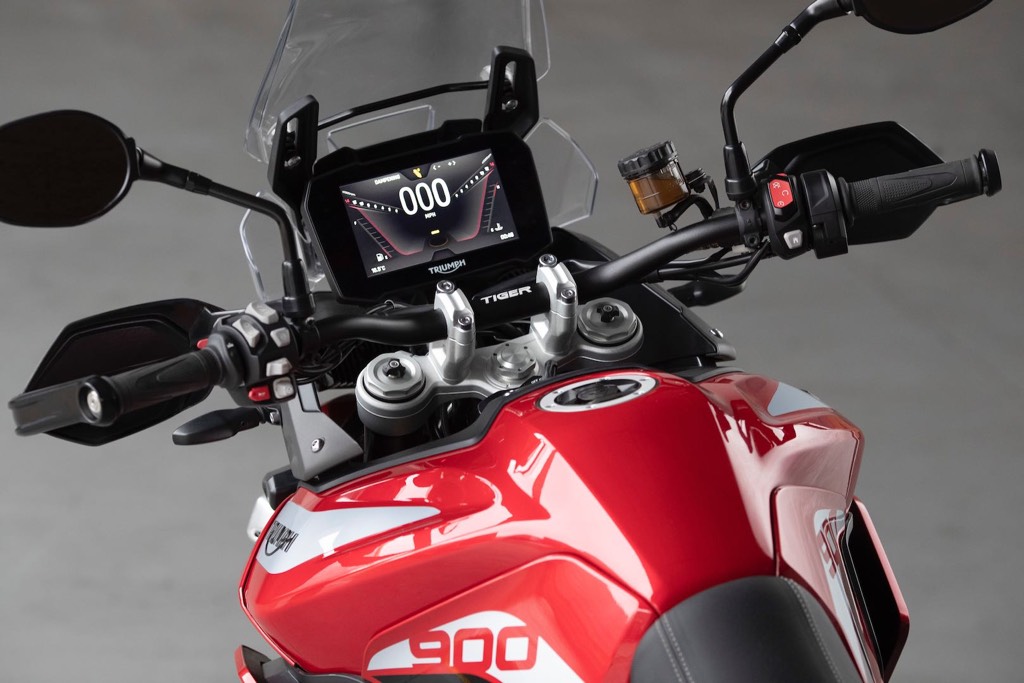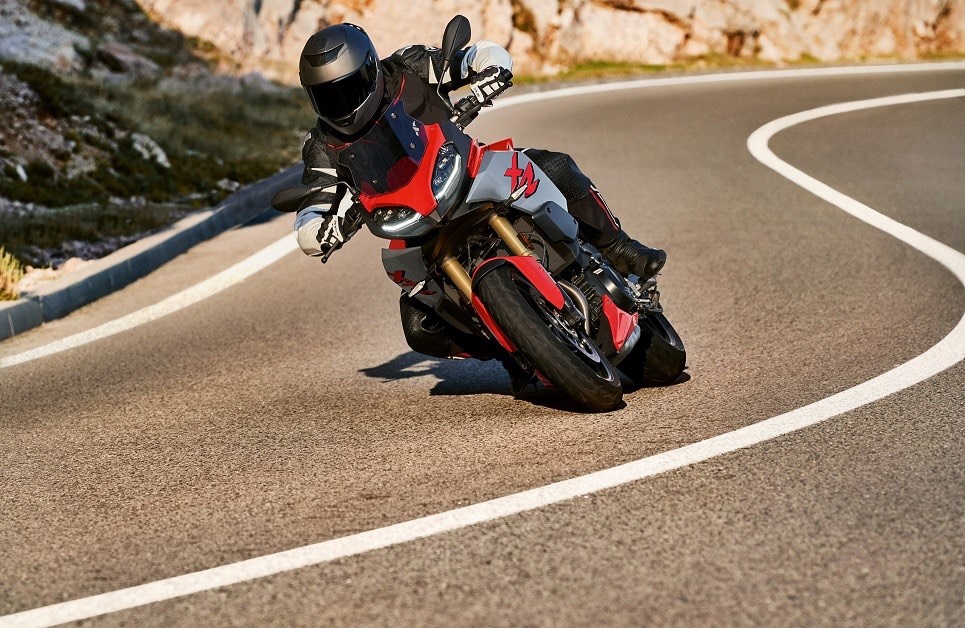BMW F 900 XR vs Triumph Tiger 900 GT – Spec Comparison
We find out how BMW's new F 900 XR fares against the Triumph Tiger 900 GT.
We find out how BMW's new F 900 XR fares against the Triumph Tiger 900 GT.
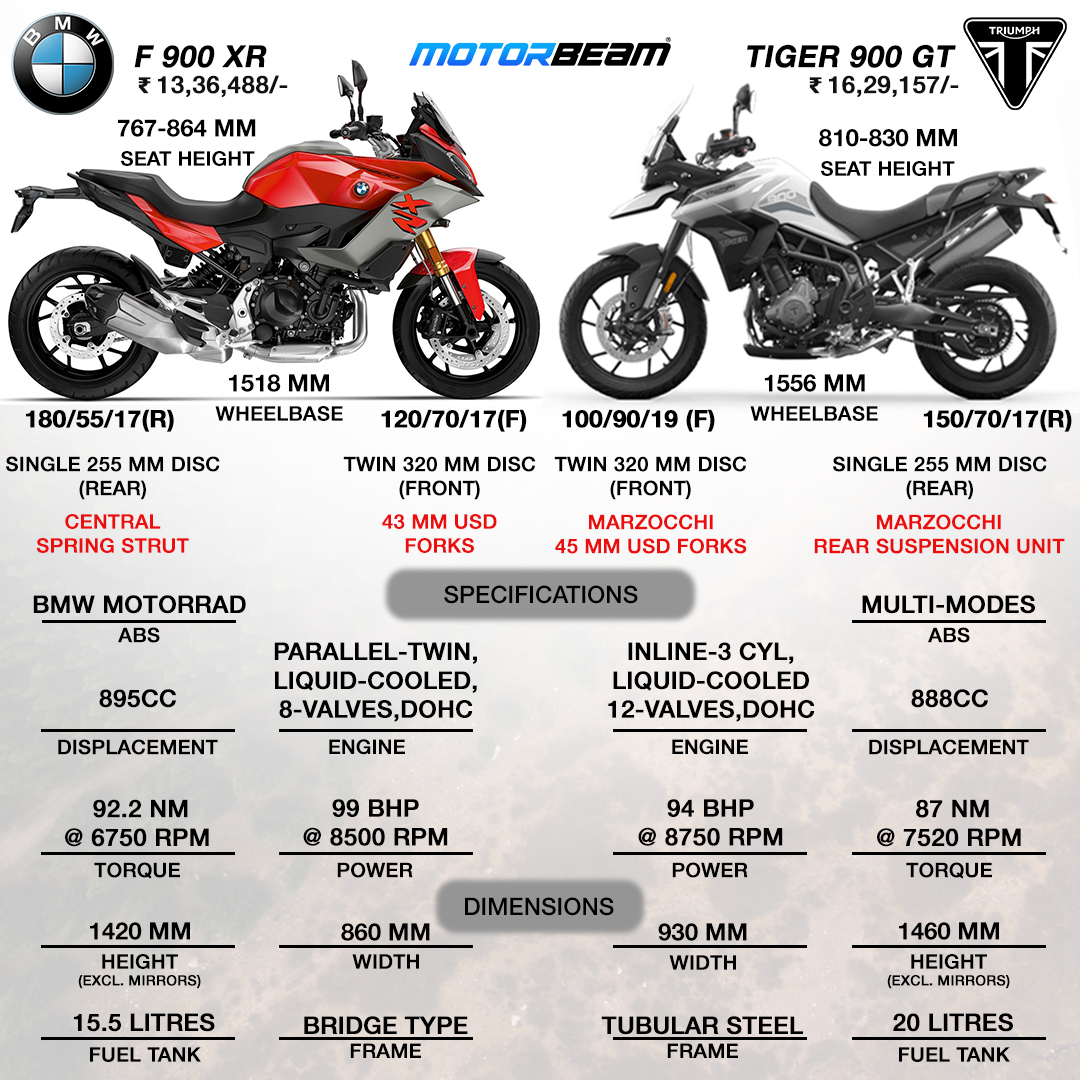
The middle-weight touring motorcycle segment has seen some great offerings by a variety of brands lately. One such offering is the new BMW F 900 XR. While the F 900 XR is a twin-cylinder offering, it clearly gets most of the cues from its inline-4 sibling, the S 1000 XR. With Triumph already terrorising this segment with the Tiger 900 series, we thought it’d be interesting to see how the BMW F 900 XR vs Triumph Tiger 900 fight goes.
Both motorcycles look exactly how a middle-weight touring motorcycle should look, i.e. tall, long, beefy and comfortable. But BMW and Triumph have their own ways to go about these 4 words. First, let’s talk about the BMW F 900 XR. The F 900 XR is an all-new design by BMW. While the XR badge means that it gets an identical front design to the S 1000 XR, all other parts resemble the F 900 R. One might even call it an F 900 R with the S 1000 XR’s fairing. It gets LED headlamps, DRL’s and a sharp little stout, but the motorcycle looks a little blunt and bulky overall.
The Tiger 900 GT, on the other hand, replaces the very popular Tiger 800 XRX. As expected, it shares a lot of its design elements with the Tiger 800 XRX. The 900 GT gets LED headlamps with DRLs too, but the standout bit is definitely the long stout. The long stout makes the bike look more off-road friendly and much sharper from the front. While the XR looks bulky, the Tiger looks smaller, more composed and well-put. To conclude, we think people who like off-road motorcycles will find the Triumph more appealing, while people who like futuristic designs will find the BMW more appealing. Let us know which appeals to you in the comments.
To start off, let’s get the common features out of the way. Both motorcycles get LED headlamps with DRLs, a digital speedometer, riding modes, ABS, hand guards, traction control (TC) and USB charging facility. Coming to the differences, the BMW gets two riding modes (Rain and Road) while the Triumph gets four (Road, Rain, Sport and Off-road). The Triumph also gets an IMU-based cornering ABS and Tyre Pressure Monitoring System while they seem to be missing on the XR. For a more luxurious ride, the Tiger also gets heated grips and cruise control, which the XR misses out on. Again.
But the XR has some tricks of its own. The XR gets a steering damper, self-cancelling turn indicators, an adjustable windscreen and even an electronic immobiliser as an anti-theft measure. All these seem to be missing on the Triumph. Also, while both feature roughly the same size displays (6.5 inches for BMW and 7 inches for Triumph) for the speedometer, the 900 XR gets BMW’s connectivity features whereas the Tiger 900 GT gets no connectivity features. It’s safe to say that both motorcycles are feature-packed to the brim and offer great functionality in their own ways.
Don’t let the ‘900’ in their names fool you, as there is plenty different here as well. On one hand, the BMW F 900 XR gets an 895cc parallel-twin motor which produces 95 BHP of power at 8500 RPM and 92.2 Nm of torque at 6750 RPM. The Triumph Tiger 900 GT, on the other hand, has an 888cc inline-3 motor which makes 94 BHP at 8750 RPM and 87 Nm of torque at 7520 RPM. Both engines get liquid-cooling. It’s quite ironical that even though the Triumph has an extra cylinder, it still suffers from a 5 BHP and 5 Nm deficit, which can prove crucial when belting out. The extra cylinder will probably result in a smoother ride quality for the Tiger 900 GT, though.
Coming to the anchors, both motorcycles feature exactly the same disc brake sizes i.e. dual 320 mm discs in the front and a 255 mm single disc for the rear. While both motorcycles have Brembo callipers, the Triumph Tiger 900 GT gets the top-notch Brembo Stylema calliper, which will probably out-perform the ones on the XR. The Tiger 900 GT also gets a much bigger 20-litre fuel tank as compared to the F 900 XR’s 15.5 litres.
While both motorcycles come under the same segment, both are biased in their own ways. Allow me to explain. The F 900 XR gets the standard 17-inch rim size for the front whereas the Tiger 900 GT gets a bigger 19-inch front wheel which we usually see in off-road motorcycles. This means that while the BMW F 900 XR will handle better on the road, the Tiger will handle better when you go off it. Both have the same rear rim size, but the tyre sizes are different.
Coming to tyres, the F 900 XR gets the sticky Michelin Road 5 tyres (F-120/70, R-180/55) while the Tiger 900 GT gets the Metzeler Tourance Next tyres (F-100/90, R-150/70). Both tyres offer good grip but the Michelin is a little road-biased whereas the Metzelers will offer more grip when things get loose. The F 900 XR will offer more agility though, thanks to the shorter wheelbase.
Both motorcycles share the same segment and have similar ergonomics on offer. Both will be more than comfortable for long touring duties and make munching miles easier than ever. But the key difference lies in the suspension setup of the two. The F 900 XR uses conventional 43 MM USD front forks and a central spring strut rear suspension. As for the Tiger 900 GT, it gets a much more premium setup.
To make the ride quality plush, the Tiger gets bigger 45 MM USD front forks and a fully adjustable rear suspension, both from Marzocchi. The setup on the Tiger 900 GT definitely outdoes the F 900 XR’s setup in terms of adjustability and suspension travel. This gives the Tiger 900 GT an extra edge over the F 900 XR in the ergonomics department. But the XR pulls back some points as it offers more adjustability for the seat height and will be more suitable for shorter riders.
The BMW F 900 XR retails for Rs. 13.36 lakhs (all prices, on-road Mumbai) while the Triumph Tiger retails at Rs. 16.29 lakhs. So, is the Tiger worth the Rs. 3 lakh premium over the F 900 XR? We don’t think so. While the Tiger does offer many luxurious features and will be more suitable for off-road duties, the F 900 XR is the more powerful motorcycle of the two and will be more suitable for on-road duties. You can get a Hero Xpulse for dedicated hardcore off-roading from the Rs. 3 lakhs that you save and you’ll still be left with about Rs. 1.5 lakhs in the pot.
